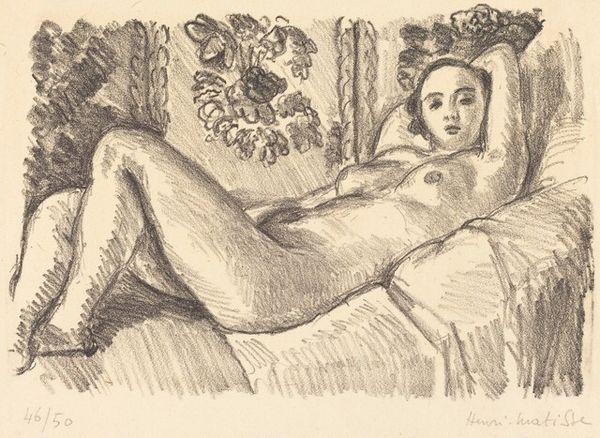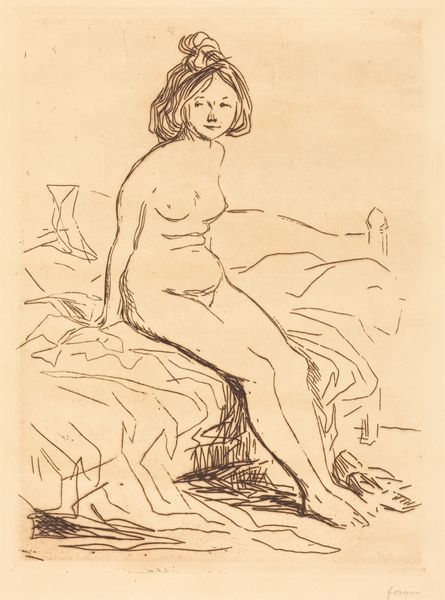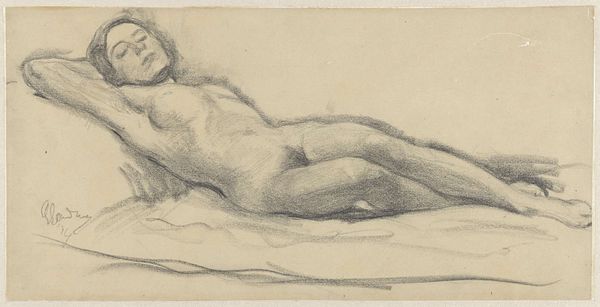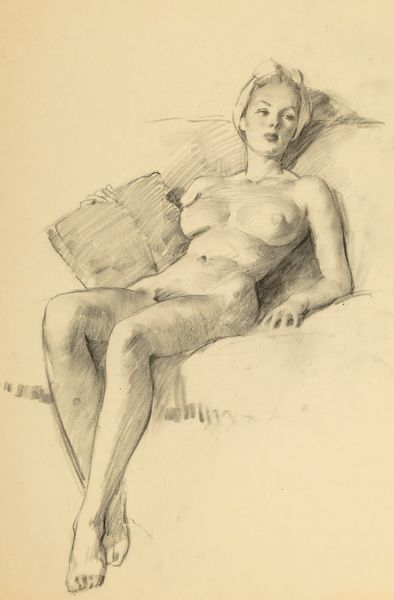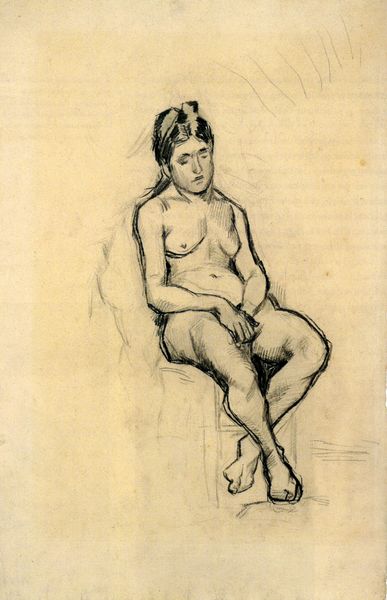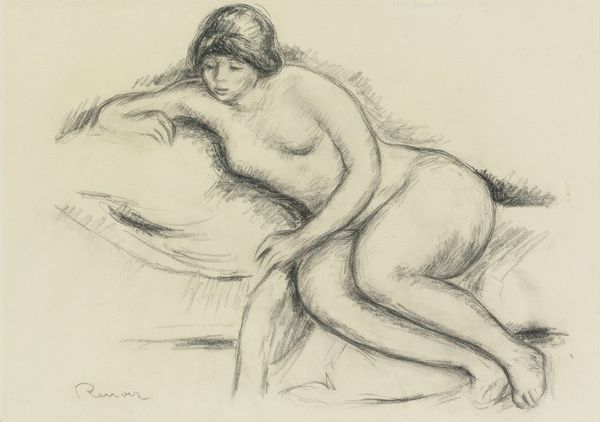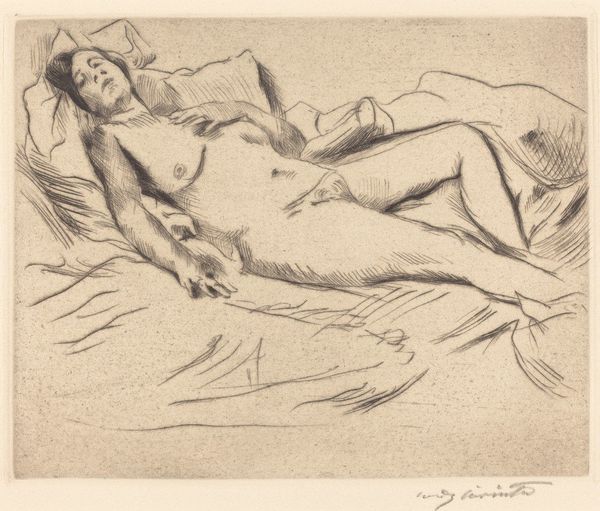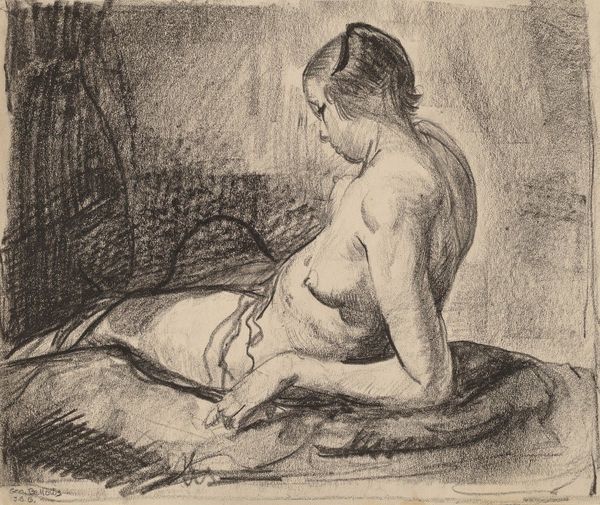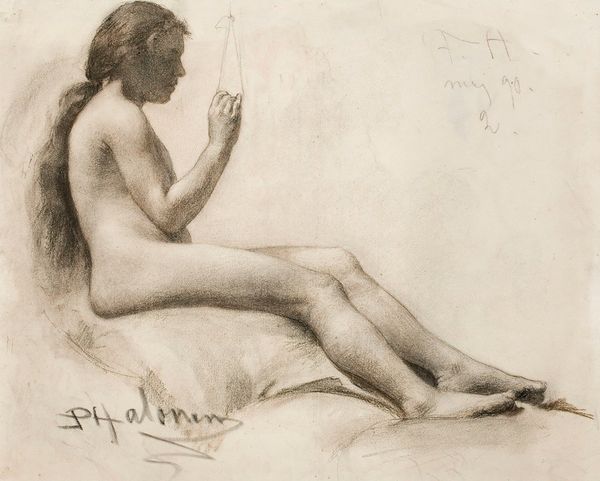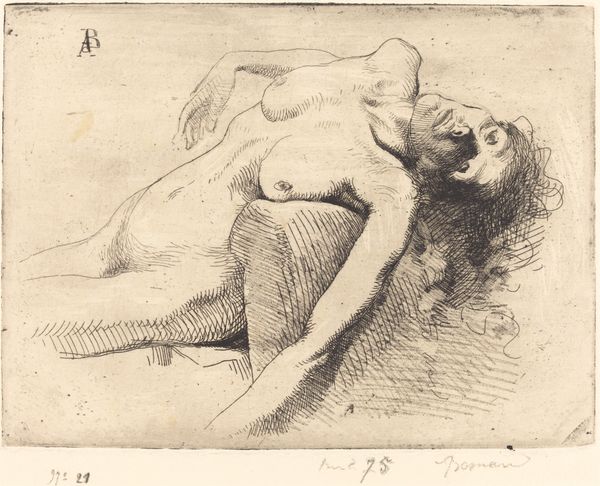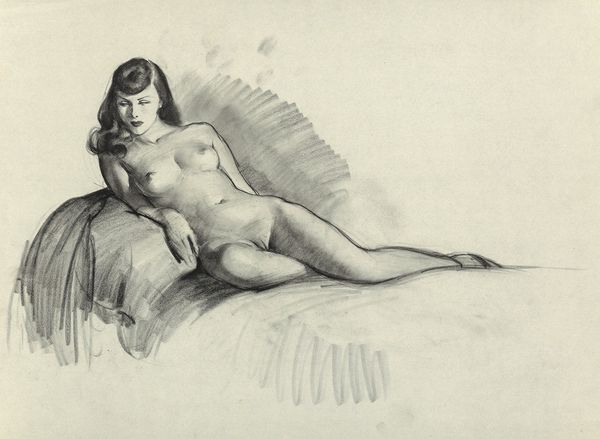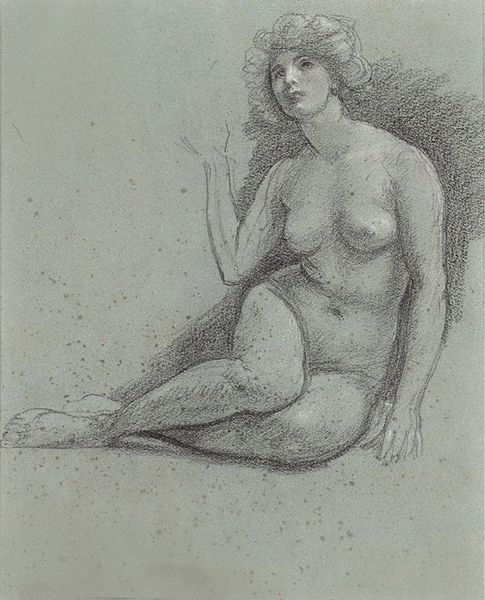
drawing, charcoal
portrait
drawing
impressionism
charcoal drawing
figuration
female-nude
pencil drawing
sketch
portrait drawing
charcoal
nude
Curator: Van Gogh's "Study for Reclining Female Nude," completed in 1887, greets us with the intimate vision captured through charcoal on paper. It resides now in the Van Gogh Museum. What's your initial take? Editor: Hmm, I find her incredibly relaxed. There's something deeply comforting in the way she reclines, hands behind her head like she owns the world, or at least that patch of hay she's lying on. I mean, the sketchiness gives it a very immediate feel, like we’re intruding on a private moment, don't you think? Curator: Indeed. While part of Van Gogh's training in Paris, the artwork raises questions about academic constraints and individual expression during that time. Nude studies were a common exercise, but his treatment seems quite personal. How does that spontaneity inform, or perhaps challenge, the traditional notions of the nude in art? Editor: Precisely. I sense he’s chasing after something raw, a truthful, unvarnished human form. The roughness, the hurried strokes… it’s a beautiful revolt against polished perfection, even though, of course, one must consider, in terms of the politics of representation at the time, that his nude has distinctly racialized features. There are echoes of colonial attitudes inherent within his chosen figuration. Curator: A fascinating, crucial point. Given that this was created in Paris, during a period when ideas of race were, to say the least, problematic. His focus also speaks to his desire to grasp form and volume, almost obsessively, that we find elsewhere in still lives and landscapes. And even the lack of precise refinement adds vulnerability. Editor: Absolutely. One could also argue that by avoiding idealization, it makes her more present, somehow. As though she might stir at any moment. In a sense, by leaving traces of the creative process exposed, the sketch opens up avenues for deeper, potentially complicated, interpretation of race and representation. What do you suppose audiences then made of the raw intimacy that it projects? Curator: Reactions must have varied wildly! I wonder if viewers, like us, grappled with that tension between aesthetic appreciation and the prevailing social biases encoded in artistic practice, perhaps even more intensely back then. Anyway, thank you for these insights! Editor: Likewise! I am struck by what happens when historical critique meets unbridled mark-making.
Comments
No comments
Be the first to comment and join the conversation on the ultimate creative platform.
